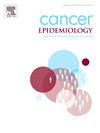美国亚洲和太平洋岛民妇女浸润性乳腺导管癌发病率和预后的地区差异
IF 2.3
3区 医学
Q3 ONCOLOGY
引用次数: 0
摘要
背景:在过去的40年里,与其他种族的患者相比,亚洲女性的乳腺癌发病率呈不成比例的增长。我们的目的是根据美国不同地区的居住状况来确定亚洲妇女的发病率和生存率的变化。方法采用美国监测、流行病学和最终结果数据库(SEER)对17州导管癌病例及其亚型(ICD-O-3/3编码:8500、8521、8503、8507、8514、8522、8523;2000-2020年期间亚洲和太平洋岛民(API)妇女的C50.0-50.9)。卡方检验用于临床和社会经济变量的比较,Kolmogorov-Smirnov和Kruskal Wallis检验用于评估平均治疗时间和诊断时间之间的差异。发病率分析采用关节点回归软件,Kaplan-Meier生存曲线评估地区生存率,以月为单位。多变量Cox比例风险回归确定了独立的生存预测因子。所有统计分析均采用SPSS 29.0.2版本进行,p < <; 0.05具有显著性。结果在20年的研究期间,西方的发病率最高,为89.6 / 100,000(95 % CI: 88.9-90.2)。5年和10年生存率有显著差异,南方下降最大,从5年的84, %和10年的54, %下降。尽管发现南部的治疗时间最短,为0.97个月(95 % CI: 0.95-0.99; = 0.009页)。多因素Cox回归显示,与西部相比,南部API妇女的死亡风险增加24 % (aHR 1.244, 95 % CI: 1.176-1.315;p & lt; 0.001)。结论:本研究的结果表明,不同居住状态的API女性在发病率、治疗模式和生存结果方面存在显著差异。本文章由计算机程序翻译,如有差异,请以英文原文为准。
Regional disparities in incidence and outcomes of invasive ductal carcinoma of the breast among Asian and Pacific Islander women in the United States
Background
Asian women have experienced a disproportionate increase in breast cancer incidence over the past four decades when compared to patients of other races. We aim to determine the variation of incidence and survival rates for Asian women based on their residential status by region of the United States.
Methods
The Surveillance, Epidemiology and End Results (SEER) 17-State database was used to identify cases of ductal carcinoma and its subtypes (ICD-O-3/3 codes: 8500, 8521, 8503, 8507, 8514, 8522, 8523; C50.0–50.9) among Asian and Pacific Islander (API) women during 2000–2020. Chi square tests were used for comparison of clinical and socioeconomic variables and Kolmogorov-Smirnov and Kruskal Wallis tests were used to assess differences between mean time to treatment and diagnosis. Incidence was analyzed via Joinpoint Regression Software with Kaplan-Meier survival curves for evaluation of survival by region, measured in months. Multivariate Cox proportional hazards regression identified independent predictors of survival. All statistical analyses were conducted using SPSS Version 29.0.2, with significance at p < 0.05.
Results
The West represented the largest incidence over the 20-year study period with 89.6 per 100,000 (95 % CI: 88.9–90.2). There were notable differences in both 5-year and 10-year survival rates with the south having the largest decline, dropping from 84 % at 5 years and 54 % at 10 years. This is despite the south being found to have the shortest time to treatment, 0.97 months (95 % CI: 0.95–0.99; p = 0.009). Multivariate Cox regression showed API women in the South had a 24 % increased risk of mortality compared to those in the West (aHR 1.244, 95 % CI: 1.176–1.315; p < 0.001).
Conclusions
The results of this study demonstrate significant disparities in incidence, treatment patterns, and survival outcomes amongst API women by residential status.
求助全文
通过发布文献求助,成功后即可免费获取论文全文。
去求助
来源期刊

Cancer Epidemiology
医学-肿瘤学
CiteScore
4.50
自引率
3.80%
发文量
200
审稿时长
39 days
期刊介绍:
Cancer Epidemiology is dedicated to increasing understanding about cancer causes, prevention and control. The scope of the journal embraces all aspects of cancer epidemiology including:
• Descriptive epidemiology
• Studies of risk factors for disease initiation, development and prognosis
• Screening and early detection
• Prevention and control
• Methodological issues
The journal publishes original research articles (full length and short reports), systematic reviews and meta-analyses, editorials, commentaries and letters to the editor commenting on previously published research.
 求助内容:
求助内容: 应助结果提醒方式:
应助结果提醒方式:


